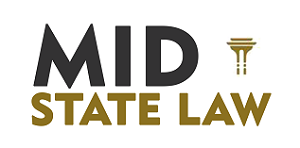Regardless of the day of the week, if you search Google by typing in the term “sexual harassment,” you’ll encounter several “news” links with several headlines about allegations concerning this heinous crime. The stories are never limited to specific industries or geographical locations, and they also prove most employers never invest in stopping events of sexual harassment at offices. As an employer, if you don’t want your name to be on the list of the aforementioned “negligent” company owners or managers, you should definitely take the necessary steps to stop sexual harassment at your workplace as soon as possible. After all, if someone gets harassed and if the person resorts to legal support to get Justice for sexual harassment, the fallout won’t spare you, even if you didn’t have anything to do with it or were entirely unaware of the actions of the guilty employee.
- Clarify it: There are a few good and bad sides to the #MeToo movement. The bad side is that the events of sexual harassment don’t seem to be coming to an end, and they aren’t reducing in terms of numbers, either. The good side, however, is that the victims are starting to retaliate legally and vocally, which is healthy for society. The #MeToo movement is also increasing awareness among people. It’s educating the staff members and employees of workplaces all over the world that sexual harassment is something they should never tolerate. So, what’s your role in all this? As the owner or manager of an organization, you must review your employee protection policies from time to time and come up with ways to improve and enforce them. You must clarify to everyone working at your company that the prevention of sexual harassment is an organizational priority. Whenever you communicate your policies, you must do so with a strong and unequivocal tone because researchers found that a tepid tone falls on deaf ears.
- A proper understanding: Despite being an uncomfortable topic of discussion, you have to help everyone understand the true meaning of sexual harassment, including employees and the management team. It does sound weird, but, at times, people don’t even realize they’re being harassed. When it comes to seeking Justice for sexual harassment, everyone thinks of reporting physical contact of the inappropriate kind, but it actually encompasses different objectionable behaviors and actions, including passing lewd sexual comments, watching inappropriate content, or forcefully showing it to others. It’s equally crucial to educate managers, executives, and an employee about the more subtle variants to ensure they never escalate.
- Positivity in training: It goes without saying that you won’t be able to communicate properly with employees if you rely simply on outright statements or insinuations, particularly the guilty party. You have to tell them directly that they’re making a mistake, which, in turn, is contributing to their untrustworthiness. Sexual harassment education and training methods primarily focus on informing people about what they shouldn’t do. As a result, a few employees end up believing they’re the root of the problem, and so they harass others when left to their own devices. However, if you take a positive approach to spread the message across all employees, you’ll be able to build and nurture the kind of environment you want.
- Go easy with the legalese: Negative messages won’t resonate with employees, as already mentioned above. The same thing happens if you focus too much on regulations and laws concerning sexual harassment. While there are issues you have to cover for compliance-related reasons, they shouldn’t serve as the ultimate foundation of the training you provide to ward off sexual harassment. Besides, most employees don’t have expertise in employment law. Naturally, if you use legal language as your yardstick, you’ll end up driving the behavior standards of your employees to the lowest value.
One more tip
Another method of preventing sexual harassment at workplaces is to enlist employees as social influencers. Employees trust the HR department of the organization they work with, but they usually have more faith in their fellow employees. Researchers conducted multiple surveys constantly for years. They’ve found that the value of traditional authorities has been plummeting. Instead, the value of the word of a friend, colleague, or fellow individual with similar characteristics has been rising. That’s why enlisting employees as social influences can help you spread your “no sexual harassment” message more thoroughly and effectively. Nevertheless, things may go out of hand, even with all the measures you put into place. During such situations, you shouldn’t hesitate to contact a lawyer to see Justice for sexual harassment on behalf of the victim. In doing so, you’ll set an example of total intolerance towards this criminal offense.





